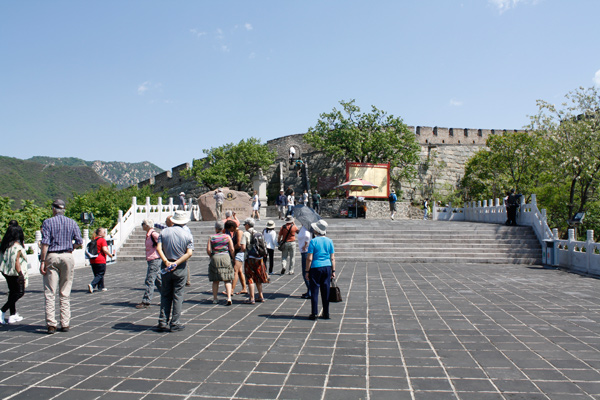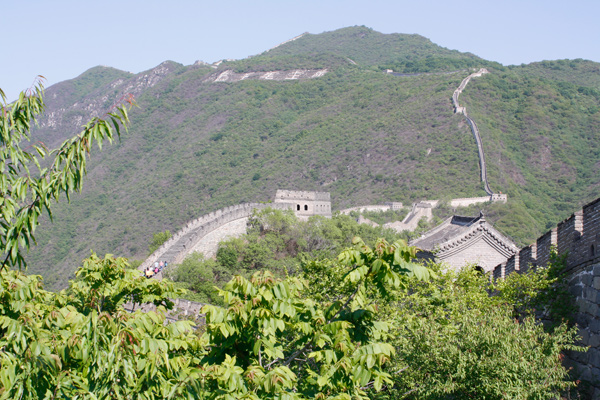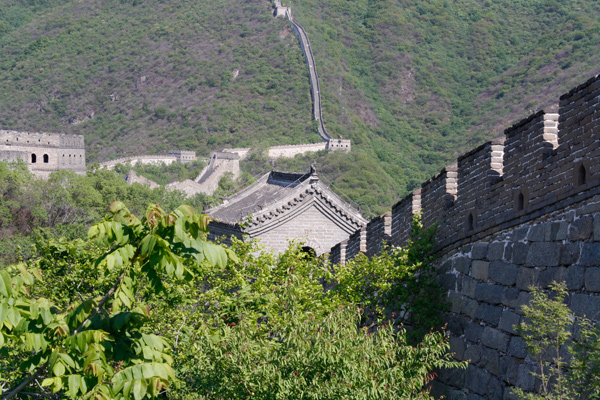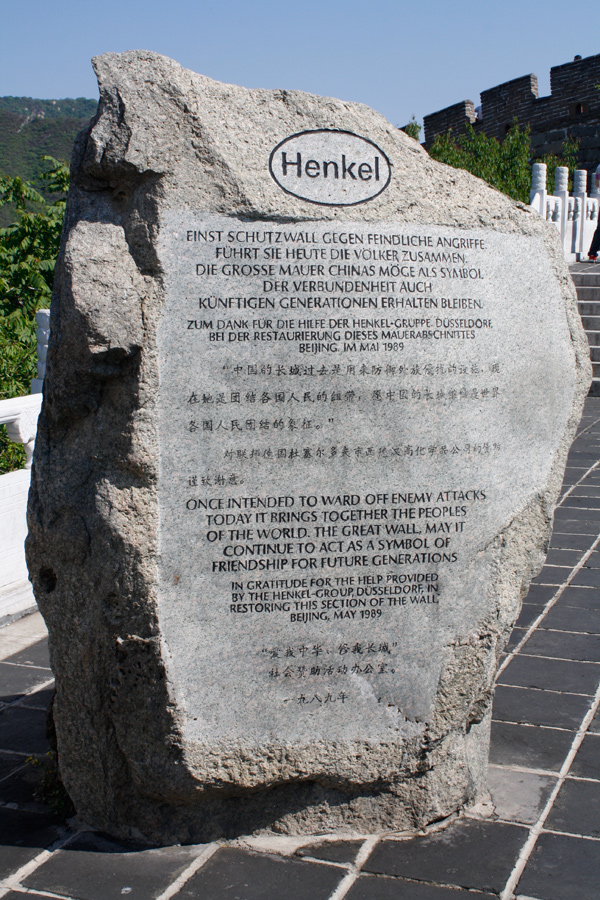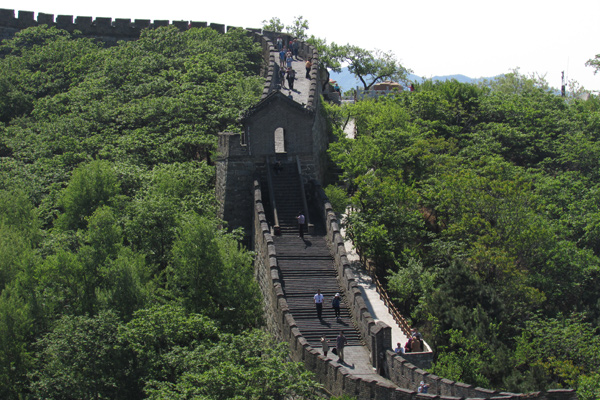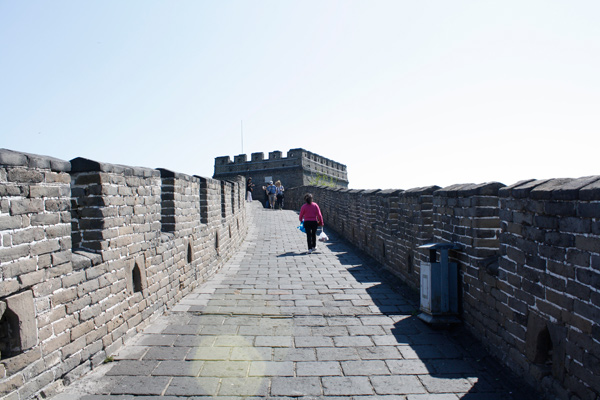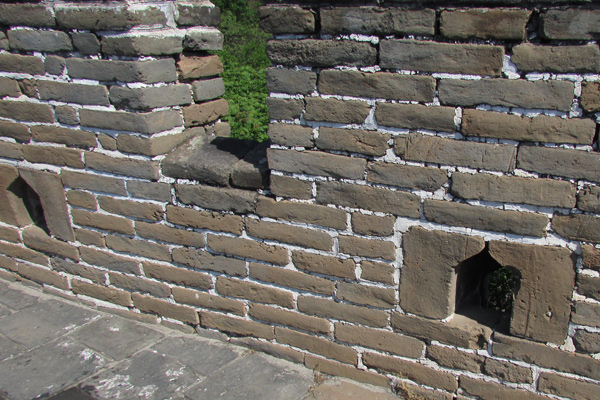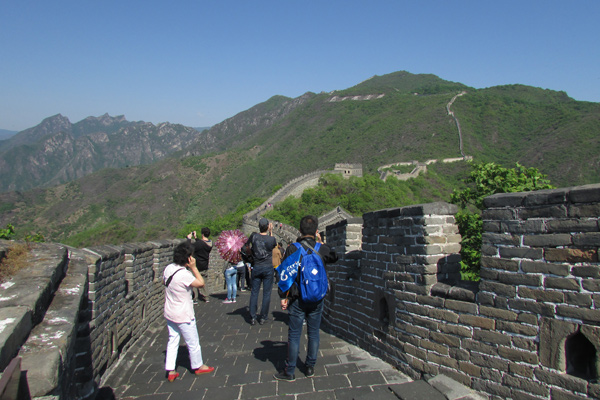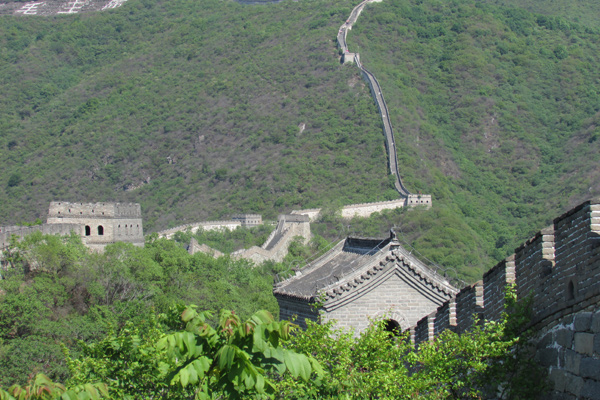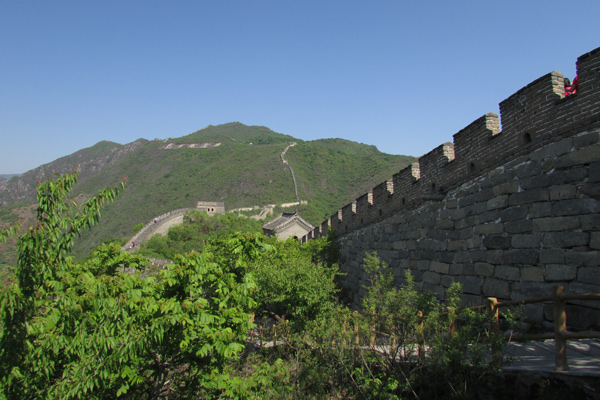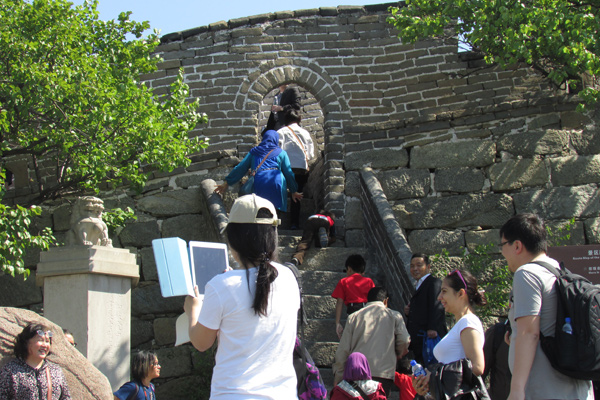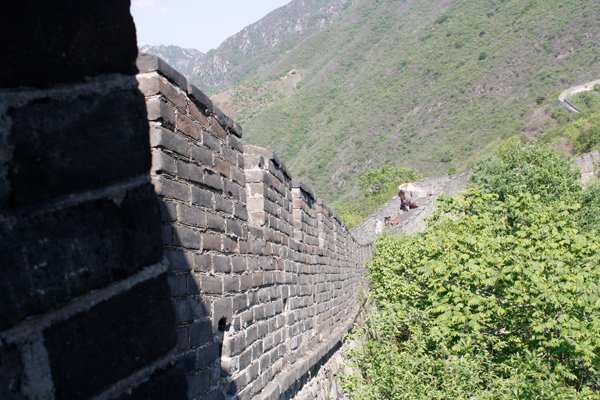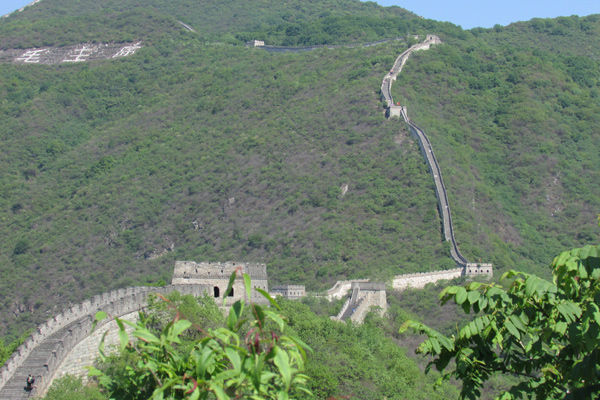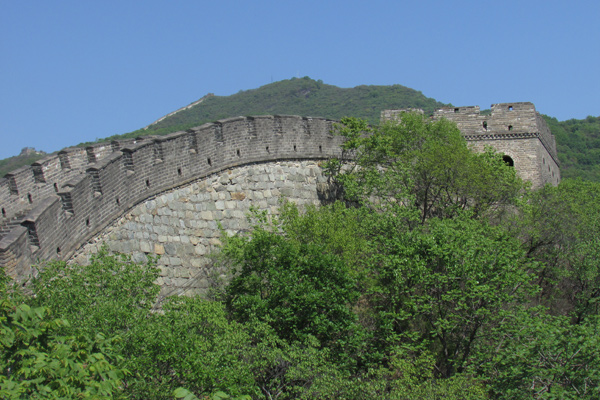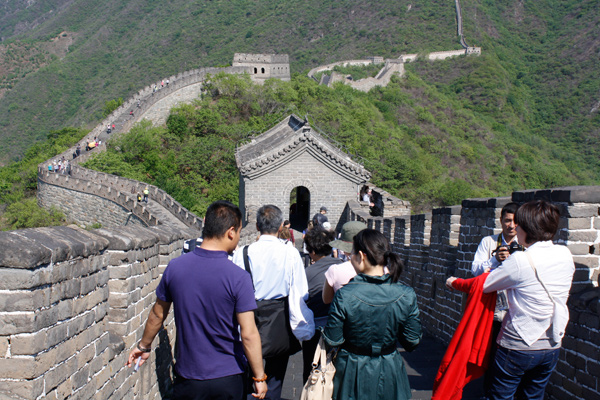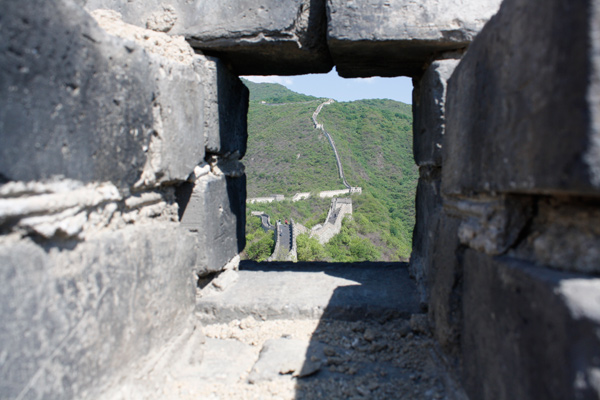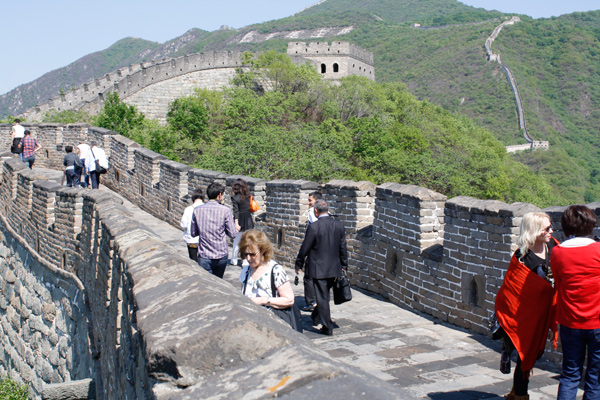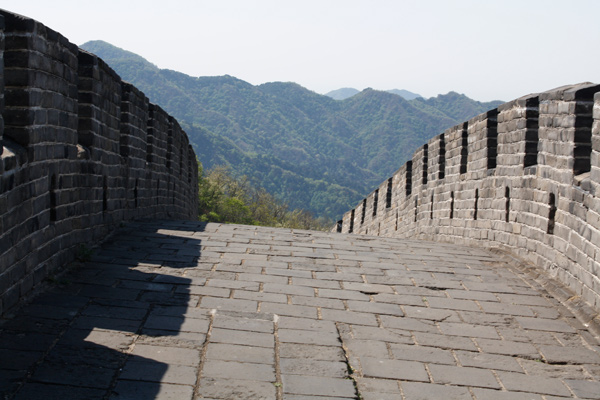Mutianyu is a section of the Great Wall of China located in Huairou County 73 km northeast of central Beijing. The Mutianyu section of the Great Wall is connected with Jiankou in the west and Lianhuachi in the east. As one of the best-preserved parts of the Great Wall, the Mutianyu section of the Great Wall used to serve as the northern barrier defending the capital and the imperial tombs. Henkel make donation to restore this section of the wall.
The commemorating stone of successful restoration of the wall was installed here and it says: “Once intended to ward off enemy attacks today it bring together the peoples of the world. The Great Wall, may it continue to act as a symbol of friendship for future generations.”
Great Wall of China stretches from Liaodong Bay north-east of Beijing in northern China through the Gobi desert. The length of the wall is 8,851 km and 800 meters. The height of the wall makes up about 5 meters. Over 1 million people participated in the construction of the wall.
The Great Wall was continuously built from the 3rd century BC to the 17th century AD on the northern border of the country as the great military defence project of successive Chinese Empires, with a total length of more than 20,000 kilometers. The Great Wall begins in the east at Shanhaiguan in Hebei province and ends at Jiayuguan in Gansu province to the west. Its main body consists of walls, horse tracks, watch towers, and shelters on the wall, and includes fortresses and passes along the Wall.
The Great Wall reflects collision and exchanges between agricultural civilizations and nomadic civilizations in ancient China. It provides significant physical evidence of the far-sighted political strategic thinking and mighty military and national defence forces of central empires in ancient China, and is an outstanding example of the superb military architecture, technology and art of ancient China. It embodies unparalleled significance as the national symbol for safeguarding the security of the country and its people.
Many parts of the Great Wall of China are rehabilitated now and are open for the visit of the tourists. Great Wall of China was included to the UNESCO World Heritage List.
According to the estimates of specialists, total length of the wall, constructed for over 2,000 years, exceeded 50,000 km. Each time large number of people and financial resources were attracted for construction of the Great Wall of China.
In terms of engineering decisions and nature of fortifications, Great Wall of the Ming Dynasty can be attributed to the facilities of the highest level. Such objects of the Great Wall as Badaling, Mutianyu, Symatay in Beijing and Shanhaiguan, Jinshanling in Hebei or Huanyanguan in Tianjin now are places of pilgrimage for tourists; they are all on the outskirts of the capital city of Beijing. The most part of the Great Wall of the Ming Dynasty were built from brick and stone slabs. On the wall, there are viewing windows and loopholes.
The Great Wall at Mutianyu was built and restored in the early Ming Dynasty (1368 – 1644), on the remnants of a Wall originally built in the Northern Qi Dynasty (550-577). Reconstruction took place under the supervision of Xu Da, one of the founding generals of the Ming Dynasty, who was responsible for building a Wall from Shanhaiguan in the east to as far as Mutianyu. The Ming pass at Mutianyu was officially proclaimed in 1404, where is would serve as an important symbol of protection from marauding nomads to the north.
Reconstruction began in 1568 on 1000km of the Wall including Mutianyu. Responsibility was given to Qi Jiguang, a general who had built his credentials fighting Japanese pirates, and who took his responsibilities as a builder very seriously. Construction continued for many years, as the fortifications were built up with solid granite blocks, and included the construction of some of the larger defensive towers.
The most recent renovation of the Wall at Mutianyu took place from 1982-1986, at the direction of the Beijing government. Rather than a defensive fortification, the Mutianyu Great Wall Park has been designated a national tourist attraction, where it attracts thousands of visitors each year.
Mutianyu is a bit more rugged and slightly less crowded than the more famous Badaling. There are abundant natural springs which feed a great variety of plants and trees. Over 96% of Mutianyu is covered by trees and orchards, keeping the air fragrant with chestnut blossoms in the spring and fresh all year long.
Built mainly from granite, the pass at Mutianyu is an appropriately unique section of the Great Wall. 7 to 8 meters high, and 4 to 5 meters high with crenellations on both sides of the Wall, the section of the Wall at Mutianyu stretches for over 2 kilometers.
Matching its military importance, the Mutianyu Great Wall has 22 watchtowers built at almost 100 meter intervals. This number of towers is much more than would be expected along the Wall, and is also highlighted by the particular form and structure unique to this section. The Zheng Guan Tai gate stands with three connected watchtowers, with the center tower rising above the flanking structures. While each tower has its own gate, the main watchtower gate is on the east side of the building, which is quite unusual.
Other unique features in this section include the ‘Tail Wall’ which stretches out perpendicular to the Wall along a ridgeline for stronger defensive positioning, and another perpendicular extension on the other side of the Wall. Invading nomads would use the ridgelines as they marched, to avoid being caught unawares in the brambles and trees below, and the positioning of the Great Wall along the ridgeline and these adjoining tail walls are recognition of the importance of this high ground.
It is worth to mention that the tourists can purchase various souvenirs, products from silk, textile and other goods here. The traders usually give high price for their products, but tourists should bargain and cut prices 10-12 times.
